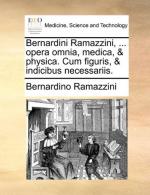|
This section contains 308 words (approx. 2 pages at 300 words per page) |
World of Health on Bernardini Ramazzini
Bernardini (or Bernardino) Ramazzini was born in Modena, Italy. He was a pioneer in the fields of epidemiology, trade diseases, and industrial hygiene. He taught at the university in Modena until the beginning of the eighteenth century, when he left Modena to join the faculty at the University of Padua. There he taught pathology up until three years before his death.
Ramazzini published the first treatise on occupational medicine in 1700. Entitled De Morbis Aritificium Diatriba (On Artificially Caused Diseases), this pioneering work systematically identified health hazards in more than forty occupations, including mining, midwifery, pharmacy, painting, printing and gilding. By recognizing the relationship between certain metals and the artisans who used them, Ramazzini effectively launched the science of industrial medicine. Ramazzini was the first person after Paracelsus to observe the prevalence of many other occupational disorders, including stone mason and miner's phthsis (pneumonoconiosis), the vertigo and sciatica of potters, and the eye troubles of gilders, printers and other occupations. He also investigated the presence of poisonous elements in some of the pigments used by painters. Besides his interest in the origins of occupational diseases, Ramazzini was also concerned with the possibilities of taking preventive measures. As a physician, Ramazzini made important epidemiological observations. He described and differentiated a number of disorders in various regions of the country where the disorders were endemic, including the outbreak of lathyrism in Modena in 1690 and the Paduan cattle plague of 1712. In keeping with the custom of clinicians of his time, he also recorded observations of the weather in (Ephemerides barometricae). He argued against the use of cinchona bark (the source of quinine) as a nonspecific treatment for disease, pointing out that the drug should only be used for cases of malaria. In modern times, Italian physicians have chosen to honor their compatriot Ramazzini by naming a medical journal after him.
|
This section contains 308 words (approx. 2 pages at 300 words per page) |


